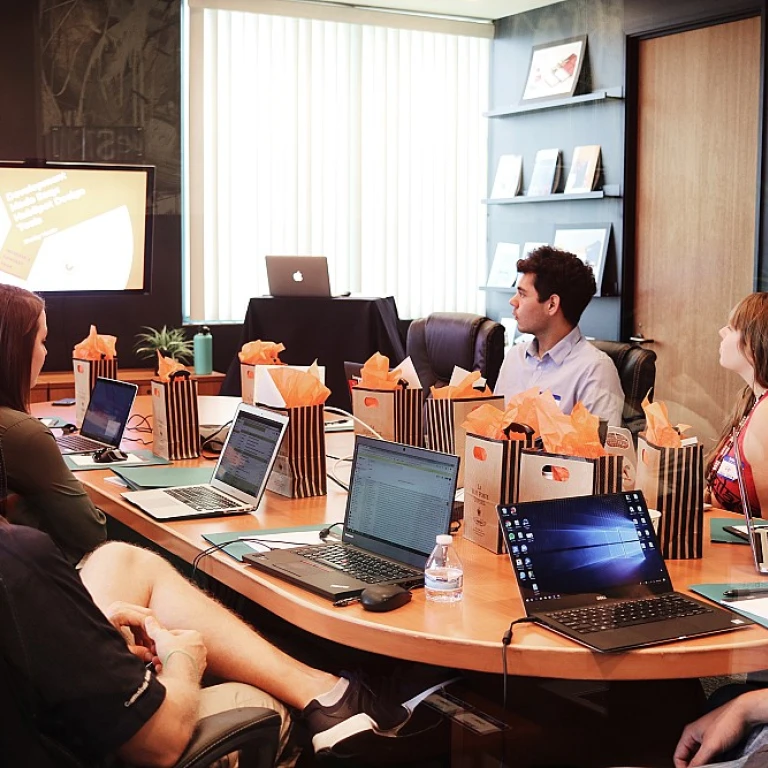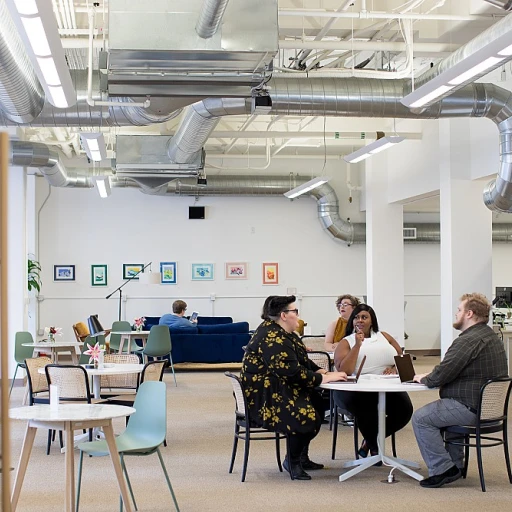
Understanding the Indian Corporate Landscape
Contextualizing the Evolution of Office Spaces in India
The Indian corporate landscape has experienced a significant transformation over the last few decades. The economic liberalization policies implemented in the 1990s set the stage for rapid growth across industries, encouraging both domestic and international businesses to establish their presence in the country. This has inevitably impacted how office spaces are designed and utilized, pushing companies to prioritize functionality and aesthetics in their office designs to accommodate an evolving work environment.Adapting to the Modern Workforce
With an increasingly diverse and dynamic workforce, Indian companies must consider various factors when designing their office buildings. Productivity is often linked to how well an office space is designed to cater to the needs of its office workers. Flexibility in office layout, incorporation of natural light, and efficient use of space are some of the key elements that can enhance work environments, contributing to improved employee well-being and performance. Moreover, as more businesses adopt hybrid models, including options for work-from-home and backyard office setups, office spaces need to integrate adaptive solutions for employees' varied needs. Incorporating features like open plan designs, adjustable desks, and mini split air conditioning systems can create a more comfortable and productive atmosphere.Challenges and Strategies in Office Construction
The process of designing and building an office in India requires careful planning and execution due to various factors like geographical diversity and regulatory requirements. Companies need to work closely with skilled project managers who can oversee the construction process, adhering to the projected timeline and budget. Prioritizing quality materials is essential to ensure the longevity and sustainability of the office building, even as companies strive to keep the construction costs within budget. Building sustainable offices not only reduces costs but also aligns with eco-friendly practices, an increasingly important consideration for both employees and employers. By understanding these nuances and effectively planning the build process, Indian companies can create inspiring spaces that elevate their corporate image while promoting productivity and collaboration across teams. For more insights on creating efficient office spaces, explore how an organized work area can enhance productivity here.Key Elements of Office Design
Creating an Efficient and Enjoyable Workspace
In the realm of enhancing productivity and fostering a positive work environment, the design of an office plays a pivotal role. When considering the office design, there are several key elements that can transform a run-of-the-mill building into an inspiring workspace. Firstly, it's crucial to understand that the layout of an office impacts both the efficiency of work processes and the well-being of office workers. A well-thought-out office layout can significantly boost productivity. Design office spaces with flexibility in mind, allowing for collaboration but also maintaining pockets of quiet spaces where workers can focus without interruptions. The inclusion of natural light is another vital factor. Not only does it reduce the need for artificial lighting, thereby lowering electricity costs, but exposure to natural light is known to improve mood and energy levels among employees. In construction projects for new office buildings, aiming to maximize natural light can create a more pleasant work environment. Utilizing materials that mitigate noise pollution within the office space is also essential. The use of high-quality materials is part of a comprehensive approach to design that ensures comfort and minimizes disturbances. The correct choice of materials can enhance acoustics, reducing the distractions caused by ambient noise, which is common in open-plan office layouts. Furthermore, the integration of mini split systems for heating and cooling can offer a cost-efficient solution for climate control, allowing different areas of the office to maintain comfortable temperatures without excessive costs. It’s also imperative to consider how technology can be seamlessly incorporated into the office build, ensuring all digital needs are met, enabling smoother work processes. Moreover, with growing awareness and commitment towards sustainable practices, choosing eco-friendly materials and designs can result in long-term savings. By paying attention to the sustainability factor, office spaces become not only more environmentally friendly but also appealing to potential clients and employees who value green practices. Finally, the build process, from initial design to completion, should always account for the time and materials costs, as well as the impact of design choices on future productivity. A successful office build is one that balances cost considerations with the needs of workers, leading to a thriving work environment. For tips on enhancing office spaces further, including the strategic use of Feng Shui principles, visit here. This approach can help create harmonious spaces that not only contribute to productivity but also to the overall well-being of employees.Navigating Regulatory and Compliance Requirements
Ensuring Legal and Compliance Adherence
Navigating the tangled web of regulatory and compliance requirements is a crucial aspect of building an office space in India. Understanding the necessary permits and adhering to local building codes not only ensures safety but also streamlines the construction process and helps avoid potential legal hurdles. Before embarking on any office construction project, it is essential to:- Identify Zoning Requirements: Every industrial and commercial area has specific zoning laws. These dictate aspects like the type of business operations permissible in the area and necessary provisions for parking facilities.
- Acquire Building Permits and Approvals: Securing the necessary permits and approvals from local municipalities and civic authorities ensures that your project can commence without interruptions.
- Consider Environmental Regulations: Incorporating eco-friendly practices in your office design is becoming increasingly important. Compliance with environmental norms can contribute positively to your brand's reputation and the local community.
- Work with Qualified Professionals: Hiring experienced architects and project managers who are well-versed with the regulatory framework can optimize the design office process, avoid potential pitfalls, and help keep construction costs under control.
Incorporating Technology in Office Spaces
Leveraging Technology for Optimal Workspaces
In the evolving corporate landscape, integrating technology into office spaces has become paramount. Indian companies are increasingly aware of the need to equip their office buildings with cutting-edge technological advancements that streamline the build process and enhance productivity. One of the significant considerations when designing office spaces is ensuring that they accommodate modern communication tools. High-speed internet and advanced telecommunication systems are essential for fostering seamless collaboration among office workers, whether they are in a building office or working from a backyard office setup.To build an efficient office environment, it's crucial to invest in smart office technologies. Automated lighting systems, for instance, can reduce energy costs while maximizing the use of natural light to improve the work environment. Additionally, installing mini split systems can optimize temperature control, ensuring comfort for all workers in the office building.
Office design must also embrace the digital transformation by incorporating digital signage and virtual workstations. These elements not only enhance the aesthetic of the office layout but also ensure an engaging and dynamic work atmosphere.
Furthermore, agile meeting spaces equipped with state-of-the-art video conferencing facilities enable seamless communication with remote workers. As remote work becomes more prevalent, having adaptable office spaces that can handle hybrid work models is essential.
Whether you're embarking on a new office construction project or renovating an existing office space, integrating technology should be a core focus. This will undoubtedly lead to improved productivity and a more efficient working process, ultimately benefiting the overall success of your company.
Sustainability and Eco-Friendly Practices
Embracing Eco-Conscious Practices in the Modern Indian Office
Creating a sustainable work environment is rapidly becoming a priority for office building projects in India. Companies are increasingly mindful of incorporating eco-friendly practices into their office spaces to promote a healthier and more sustainable work environment. Here are practical insights to guide your work-related decisions:- Office Materials and Design: Choosing the right materials is essential for building an office that reflects environmental consciousness. Opt for sustainable materials like bamboo, recycled steel, and low-VOC paints. These options not only reduce the adverse impact on the environment but also contribute to a healthier office space, minimizing the carbon footprint during the construction process.
- Natural Light and Energy Efficiency: Designing office buildings with large windows provides ample natural light, reducing the need for artificial lighting. This design not only cuts down on energy consumption but also enhances the well-being and productivity of office workers by creating a more inviting work environment.
- Green Building Certifications: For companies looking to establish their reputations as leaders in sustainability, pursuing green certifications such as LEED is advisable. These certifications ensure that buildings are constructed and operated in environmentally friendly ways, often leading to cost savings in the long run.
- Waste Management and Recycling: Incorporating waste management systems is crucial in the overall design process. Offices can include recycling stations and encourage zero-waste policies to reduce impact and promote sustainable habits among workers.
- Energy-Efficient Systems: Installing energy-efficient heating, ventilation, and air conditioning systems such as mini splits can drastically reduce energy consumption and operational costs. This step is not only beneficial for the environment but also offers significant cost savings over time.
Budgeting and Financial Planning
Effective Budgeting and Financial Planning for Office Design Projects
Crafting a workspace for an Indian company requires meticulous budgeting and financial planning. This process not only aids in managing initial construction expenses but also addresses ongoing costs, impacting the long-term sustainability of office spaces.
When estimating the cost to build, one must consider not only the core expenses of construction, but also the potential for unforeseen costs that may arise. Factors such as choice of materials, adherence to compliance requirements, and the integration of technology can affect the overall financial outlay significantly.
In terms of materials, opting for sustainable and durable options might initially appear more expensive, but they often yield savings over time due to reduced maintenance and replacement costs. Energy-efficient choices, like installing mini splits for air conditioning and maximizing natural light, are investments that can considerably lower utility costs and promote a healthier work environment for office workers.
Furthermore, given the unpredictable nature of construction timelines and costs, it's advisable to establish a contingency budget. This financial buffer can accommodate unexpected expenditures related to sourcing building materials or changes in the construction process.
Another key aspect is evaluating the costs associated with different stages of the project, which includes planning, designing, and executing the build process. Engaging a project manager with expertise in office design can be instrumental in aligning your financial plan with the project goals, ensuring timelines are met efficiently, and workers are well-managed.
As businesses focus on enhancing productivity and ensuring a pleasant atmosphere within their creations, careful financial planning in building design is paramount. Always prioritize long-term savings while minimizing immediate expenses for a cost-effective approach to designing office spaces that support the company's growth ambitions.













